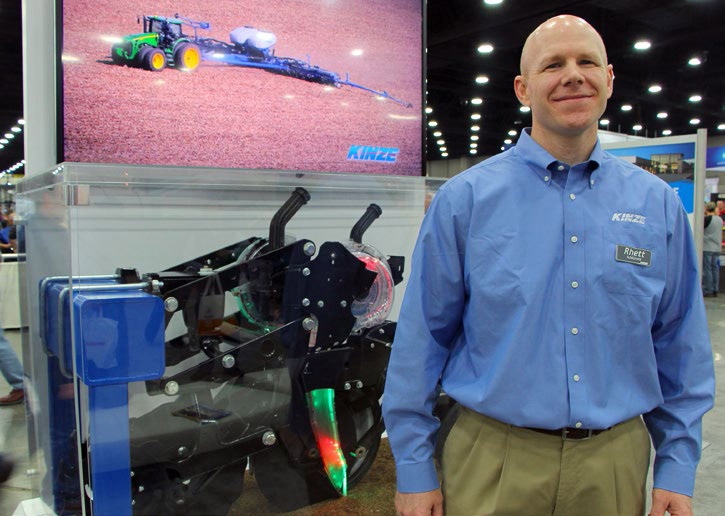May 5, 2014

Q. How did you design a planter that can switch between two different hybrids on the go to match field conditions?
A. We’ve made a practical way to implement multi-hybrid technology. We’ve added a second meter to our 4000 series row unit so that both meters are feeding down through a single seed tube but can automatically change from one hybrid to another one. And it is an instantaneous switch. Literally, within one seed, you can change from one hybrid to the second hybrid.
Q. What was the enabling technology?
A. Our electric drive technology. It allowed us to position two meters above one seed tube.
Q. Before you used hydraulic meters?
A. Yes. Hydraulics worked but it involved hydraulic pumps, drive shafts, and chains going to the meters. With all of those parts, it would have been cumbersome to put two meters on one row unit. With electric drive, all that disappears. We simply have an electric motor built in each one of our meters, and that enables us to be creative in how we positioned them.
Q. Will we see more of this technology?
A. Yes. I truly believe it will be the next big thing in planting. There are two reasons for that. Number one, every study I’ve seen has shown positive yield results. Some years are better than others. But you always see positive results because you are able to tailor hybrids to different zones in your field. The other reason is that it is a fairly straightforward agronomic practice to implement. You can very quickly, through yield maps, determine where those zones are, and then you can work with your seed company to tailor the seed to those areas.
Q. What has been the interest?
A. We are seeing phenomenal interest in it. What is interesting, though, is that about half of the farmers, who really know their fields, come up and say they have been looking for this type of technology. They are asking buying questions such as, when they can get it, and how much does it cost. The other half come up and say it is interesting but it is not for me because I don’t have that much variability in a field. But, what’s fun, is that there is a very quick transition from that statement as I ask, Tell me about your soil maps. Your yield maps. Any variations there? Wouldn’t it be nice to plant a less expensive seed in those less productive areas? In about five minutes, the light bulb turns on and they see the variations, whether they are based on soil type or elevation or maybe parts of fields have pressures from pests. The reasons vary but the need is consistent.
Q. Are you looking at a 2015 launch?
A. We entered this year thinking we will judge farmers’ response and decide if we will put it in production. The response has been so positive that we are going to work this into our road map as quickly as possible. But I can’t put a date on it.
Q. Will mechanical planters still have a place?
A. I don’t foresee ground-contact drives going away any time soon. I foresee hydraulic drives will disappear within several years, and electric drives will take that place. But there still is a place for a less expensive planter, especially for smaller farms. I foresee us selling ground-contact planters for a long time.
Q. What else can we expect from Kinze?
A. We also will continue to innovate in the autonomy arena. You will see some new features that we will be adding this year on our harvesting system. We’re not talking about it yet, but stay tuned. We also are working on the autonomous planting system, but the harvesting system is further along.
Q. Anything else you are hearing from farmers this year?
A. Fertilizer, both popup and start up, is the first thing farmers are asking me about. What do you have? How can I adopt this system? People are realizing they get a nice yield bump from giving the seed a strong start, and that interest is growing. We are seeing our numbers for those sales continuing to creep up every year.
About the Author(s)
You May Also Like




